HTC 8X vs Nokia Lumia 920: Signature vs Flagship
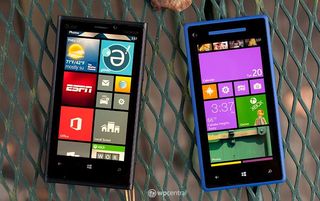
(Editor's Note: Our Windows Phone Central app developer, Jay Bennett, weighs in on the Lumia 920, the HTC 8X and his experience with both. PS It's his birthday today, so take it easy on him!)
With the release of Windows Phone 8 there is something of a rivalry forming between the HTC 8X, the ‘Signature Windows Phone’, and the Nokia Lumia 920, arguably the flagship Windows Phone in terms of hardware & features.
Whilst many consumers have already made their decision we know that some will still be mulling over the options, or perhaps contemplating one due to unavailability of the other.
It is to those people that I direct this article, we are not interested in fuelling the culture of blindly supporting one device (or even manufacturer) over the other, which honestly I would like to see stop. The simple fact is there are two awesome top end devices available right now and you have the luxury of choice, you lucky consumer you.

A quick paragraph explaining the background of my set up; I purchased the HTC 8X SIM-free in the first week of availability, after all I’m a developer and needed a device to test against. I am on a UK Vodafone contract and so it was my only choice for a high definition screen Windows Phone (the Lumia 920 currently being locked to EE/Orange/T-Mobile unless you go via certain websites). Then just over a week later at a Windows Phone SDK night here in London, I was one of 50 developers who were invited to take part in an alphalabs creative coding project, for which Nokia handed each of us a white Lumia 920.
So, I own both devices, both are unlocked, and I have been quite literally swapping my SIM between the two on a day-by-day basis to form some honest opinions based on spending days with them. I’m going to break this comparison down in to sections where there is a noticeable difference between the two; Design, Hardware, Cameras, Audio and Software. Finally wrapping up with my personal opinion about which device will become my daily driver, and offering some advice for those still torn between the two, as I was a few months ago.
Design
Let us begin with what is by far the most subjective topic. If you’ve already held both phones in your hand and seen them with your own eyes, you can probably skip this section, you’ve made up your own mind and my opinion should have no bearing on your decision.
Get the Windows Central Newsletter
All the latest news, reviews, and guides for Windows and Xbox diehards.
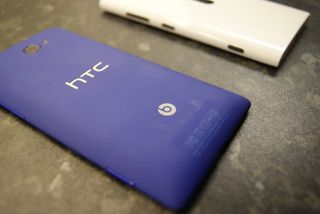
It’s safe to say that we can thank Nokia for shaking up hardware design in the Windows Phone world, the Lumia range made colour cool and complimented the live tiles of the OS perfectly. Whilst not unique to Windows Phone (see the MeeGo N9), bringing a premium feeling phone to market has definitely done a lot to put Windows Phone in the public’s general consciousness. Nokia has effectively put that original Lumia 800 design through a growth spurt, the 920 is truer to the 800 than the 900 thanks to the curved glass and rounded back. It results in a phone that tries to fit comfortably in your hand.
Where the 800 was ergonomic perfection however, the 920 doesn’t quite reach the same heights. Yes, it is a striking design and I really enjoy looking at it, caressing it and spinning in in my hand (judge me all you like) but it’s big. I have previously remarked that the phone was a brick but I admit I have to retract that comment, I was wrong. The weight is not a problem as it’s well distributed. Instead the problem (for me) is the sheer size.
I consider myself to have fairly reasonably sized hands and I need both to comfortably operate the device. If you like one-handed texting it will take some time to adjust as you find the ideal way to safely support the device whilst stretching your thumb, those of you with larger hands; this probably won’t be an issue. It’s also a good job that there’s rarely any need to tap the top left corner of a Windows Phone because if you’re using your right hand it is a real struggle to reach in to the top corner.

All the above withstanding, the Lumia 920 will still fit in to the majority of pockets and doesn’t bulge too much. The real advantage of Nokia’s design though is that it’s sturdy – really sturdy. Find any of the stress tests we’ve posted and you’ll see that this phone can take a beating and come out almost unscathed. I actually dropped the phone no more than 2 minutes after Nokia handed it to me to absolutely no effect, if heavy duty is on your list, the Lumia is hands down the winner.
HTC on the other hand, have crafted some of the first designs I’ve found interesting from the company (although the Radar was interesting). Certainly they have been influenced by Nokia although I would stop short at calling this a copy as there are aspects to the 8X which clearly separate it from Nokia’s offering.
I have the blue 8X and it is a thing of absolute beauty. It’s subtle, thin, very light and feels fantastic in the hand. The splash of blue in the speaker grill keeps the usually dull black façade varied.

One handed use of the 8X is also a breeze, although I’d still prefer the phone to be a little smaller, thanks to a very well design bezel and the choice to have a taller, 720P screen (more on that later). The phone is just about thick enough to feel comfortable in the hand, a fact which is helped by the rubberised texture HTC have chosen to wrap it in.
All those subtle edges, thin screen and the tapered rear have left one negative though; the 8X does not feel as sturdy as the Lumia 920. I have not seen as many attempts to destroy this device it feels like it may suffer some serious damage if say, it were left in your back pocket and sat on. We are also hearing that the rubberised covering can scrape off leaving a pretty distinctive mark. This is a phone to be treated carefully, not the solid construction the 920 proudly exudes.
Another point worth mentioning is that the buttons are very flush with the device, meaning they’re a little harder to press than the Lumia 920’s. it’s not a big deal with the exception of the power button though, wherein it’s position exacerbates the problem. HTC still insist on putting power buttons on top of the phone rather than being easily reachable with your thumb. It’s a design decision that belongs in the era of sub-4 inch phones and I have no qualms with calling it a mistake on HTC’s part.
The Verdict: HTC win this category for me, the phone is gorgeous, subtle and you’d barely know you were carrying it. That said I’d feel more comfortable taking the Nokia out to my local bar, nightclub or construction site.
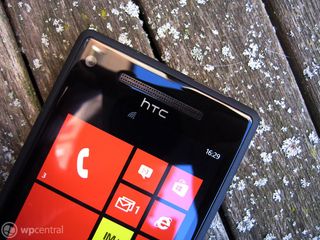
Hardware
Next I’m going to cover hardware without considering design, so this is a specs only war. You already know which handset is going to win here.
The Lumia is without a doubt the strongest offering in terms of hardware. Whilst both phones zip along with nary a stutter or load time for the majority of tasks, the Lumia claims more internal memory, better screen technology, wireless charging capabilities, a super sensitive touch screen and a better camera (on paper – more on that later).
I have absolutely no complaints with the Lumia 920 in terms of specifications, Nokia took everything I could have possibly wanted and then decided to throw a few bonuses in there. The screen looks fantastic, with blacks deep enough to be close to AMOLED quality, and there is plenty of space for my music, enough said right?
Well I’m going to pick up on one point the HTC 8X has in its favour here, and it’s the screen. Whilst the blacks aren’t quite as deep to my eye, and the screen animation isn’t perfectly smooth like the 920’s “PureMotion” tech, I find I prefer the taller 720p aspect ratio.
Of course this is all about preference, not only does the greater pixel density of the 8X not only make everything look much sharper, the aspect ratio means you see more on screen at one time. Take a look at the shot below of a development WP8 build of the Windows Phone Central app to see what I mean; you see just a bit more of the article with that extra real estate, not just a blown up version of smaller screens.

The exception here is when using apps that were built targeting Windows Phone 7.x, as they will get a nice black bar up top to ensure the aspect ratio is maintained – frustrating for now but in the long run I see the 720p aspect ratio becoming the most popular.
Putting all of the above out of the picture, the 16GB limitation which the 8X imposes is going to be a real pain for people who download a lot of their music (because streaming is not a viable alternative, data is not free). Having 16GB is manageable, it just means you’ll be pulling uploading your photos to the cloud more frequently so that they can be deleted from the phone, and making choices about which music gets to stay on the storage. Nokia have given customers a big reason to choose their device by equipping it with 32GB, that number just cements the 920 as the flagship phone.
Battery wise, both achieve a day of life with moderate to heavy usage (which I couldn’t say for the Lumia 800), but I won’t claim to have done any serious testing. Anecdotally the Lumia seems to have more charge left at the end of a day when I go to plug it back into the mains.
The Verdict: Lumia 920 all the way, it has a kitchen sink of features to call upon over the HTC 8X. That gap is slightly closed if you pick up a Verizon HTC 8X in the US thanks to the wireless charging addition, but even then the Lumia is the clear winner.

Cameras
I am by no means the camera expert that our own George Ponder and Daniel Rubino are, if you are looking for an in depth, detailed comparison taking the various technologies in to account, see their articles on the 8X or 920, or check out samples from our forums. All I can offer here is a layman’s perspective on photos taken with both cameras.
First of all, let’s get front-facing cameras out of the way: I don’t really envisage anyone taking photos with these but it is possible, and for my money I think the HTC 8X’s is the better of the two. The wide angle lens means that when you hold it at a comfortable distance your face isn’t too prominent in the frame. Quality wise there is very little to separate the two of them, both will server you absolutely fine for Skype calls or as an emergency mirror, let’s move on.
It’s a story you’re no doubt used to by now, but the Lumia 920 really is amazing in low light situations. Turn the flash off and be amazed as it captures more light than your eyes in many situations. However it’s a bit of a double edged sword, because to get these fantastic shots you do have to keep the camera relatively still (after all the lens is open for a while to let all that light in). OIS goes a long way to reducing the natural shake from your hands but it still requires you to keep the camera in one place to get a nice crisp image.

OIS also plays a great role in video capture and if you like to record all the big moments of your life then you should definitely be swaying towards the 920 as your mobile companion.
By no means is the HTC 8X a slouch, in fact the camera is excellent, a huge improvement over any of the Windows Phone 7 devices I owned. Colours are vivid, pictures are sharp and flash-aided shots don’t look dramatically washed out. In fact, thanks most likely to HTC’s post-processing applied to the pictures, it is easier to take quick snaps that look fantastic than with the 920. The 8X consistently produces very impressive pictures in most circumstances. As for video recording, the HTC’s device does a superb job of recording 1080p video which looks great when played back, but when compared to a video taken on the 920 you do see the merits of OIS.
The Verdict: This is not as clear cut as I thought, right now your average snapper will probably prefer the HTC 8X, whereas amateur photographers will appreciate the 920’s technical capability. However I suspect that Nokia’s first firmware update for the 920 is going to tweak the camera a little to reduce blur and bring out brighter pictures - it happened for the Lumia 900 after all. So with the long game in mind, I’m giving the edge to the 920.
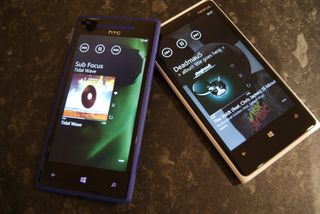
Audio
Listening to music through the HTC 8X is a dream. I wanted to believe that Beats Audio was just marketing spin (which it is, but then so is “Pureview”) but I have to admit, I actively miss the 8X’s sound when I swap to the 920. For softer, acoustic tracks I like to turn Beats Audio off, but for Rock, Dubstep, Electonic, Drum & Bass and even Pop music, it sounds better, and not just on the bass notes. If you love listening to music on the go I can honestly say that the HTC is the best sounding device I have used (obviously when paired with a decent set of headphones), and it helps that the inbuilt amp does a fantastic job of boosting volume without distorting the music.

HTC have even paid attention to the inbuilt speaker. It’s not going to re-write the history books on what small speakers in a tiny housing are capable of, but it is loud and respectable for what it is. Equally important is that the speaker cannot be muffled easily by placing your hand over the wrong part of the device.
Nokia have also put some attention in to their audio offering, with Dolby branded audio output. Turn it on and things do sound a little richer, and the 920 is a marked improvement over Nokia’s previous audio offerings, but it still falls short of what HTC are doing. I will say that if you listen to a lot of acoustic tracks the Dolby enhancements actually compliment the genre instead of over-powering it like Beats Audio.
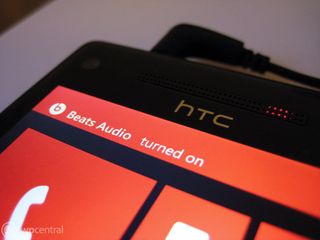
Nokia’s inbuilt speaker is also an improvement over the 800, which used to be all too easy to cover with your hands when in landscape mode. Now the 920 has two speaker grills which aid, but certainly do not abolish that problem. Of the two devices, the Lumia has the superior speaker in terms of quality and loudness, although that is partially thanks to the speaker orientation when lying the device flat.
Both devices have excellent sound quality when making a call and both become loud enough to hear even in a crowded area, so it’s an absolute tie there.
The Verdict: HTC’s 8X wins this round with flying colours, if music is your thing, and you can handle the 16GB limitations, it is the phone for you.
Software
Windows Phone 8 continues WP7’s legacy of a fast, responsive and agile operating system. The main software change has been primarily aimed at making the platform more enticing to third party developers, so with that in mind, how much actually differs between the two phones? More than you’d expect, and in ways you may not have considered.
HTC are offering the vanilla/distilled/pure Windows Phone experience here, you get exactly what Microsoft intended, plus a couple of additional settings like attentive phone (clever options to flip the device to silence, or ring louder in your bag). That’s about all there is to say for the 8X, it’s the fantastic experience we’ve all come to know and love.
Nokia are in the augmenting business with Windows Phone, as the only OEM with the power to change things we’re starting to see the fruits of their tweaking now in thier Collection. To start with, Nokia have basically removed Bing maps and replaced it with their own Nokia maps solution. That’s a real pain, not because the Nokia maps solution is particularly inferior (it’s markedly better in areas) but because as someone who searches for places and pins them to his start screen frequently, the experience is slower on the Lumia. I have to launch the app, wait, because it has a splash screen like a third party app, search the item, then pin. Now when I want to access the pinned item I wait again for Nokia maps to load.
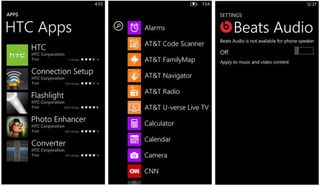
Of course if I decide to search using local scout I inexplicably then get the Bing maps client instead and can now pin Bing items to the start screen and even use Bing maps provided it was launched in this over complicated way. It’s disjointed and I pray that Nokia don’t decide to take a similar approach with Nokia Music ever in the future; augmenting the Windows Phone experience is a great idea, changing it is a risky strategy.
It won’t bother many of you, but it irks me a little because Bing maps integration was tight before, and didn’t really need replacing for this type of integration.
Nokia make up for their unnecessary tweaking with a slew of exclusive apps. I won’t talk about whether this is good or bad for the ecosystem but if apps are your poison you absolutely should be picking up a Nokia. Not just for the timed exclusives that Nokia secures (see Mirror’s Edge) but also because other non-exclusive apps appear free on Lumia phones, where other users will see a paid version.
Nokia’s own apps are also fairly neat, but in practice I can honestly say I don’t use any of them. Nokia Transit is good but I prefer the app “London Travel”, Nokia Music is good but I have an Xbox Music subscription, and City lens is cool but not really that practical. Nokia Drive is a big differentiator right now if you want to use your phone as a satellite navigation system but it will be coming to other phones pretty soon. Nokia’s Lenses applications are also a huge feature worth remembering, the Cinemagraph and Smart Shoot lenses are fun and very handy respectively. Using Smart Shoot to get the best shot of your friend’s faces is a genuinely clever piece of software. I suspect that we will see other developers come up with such technology sometime soon but for now this is another point to Nokia.
The Verdict: Nokia’s app dedication easily outweighs the minor frustrations of their OS tweaking, and ultimately they will always win the Software argument so long as they don’t try and skin the operating system sometime in the future.
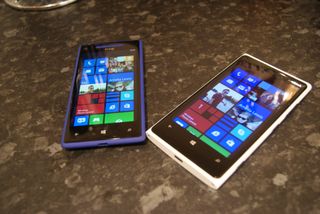
Wrapping it all up
So there you have it, my opinion on the two hotly debated Windows Phones right now. The truth of the matter is they are both incredible products which will appeal to different people. I’m not going to declare an overall winner in general terms because that would be ridiculous in honesty.
I will say that for me, the HTC 8X is most likely going to be my daily driver. My day to day activity is really just a commute to work, listening to music, browsing the web/my favourite apps and maybe snapping the occasional photo. For all of those things the HTC 8X is the better phone for me, and I am still in love with the design.
Of course I am lucky enough to have the option of both devices, so the Lumia will be accompanying me on nights out, and probably for weekends away as well, it has a superior camera overall and more storage for when I want more music variety such as long journeys.
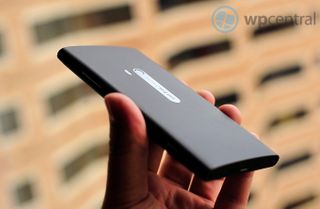
All of this brings me to the crux of this article, in choosing my daily phone the factors that drive my decision most are the design of the phone and it’s capability as a portable media player, and in those categories I consider the 8X a stronger device. If you are more into apps, games and specifications or perhaps are a University/College student taking photos in a night club several days a week you are likely going to be putting more weight behind the other factors I’ve mentioned here.
Here lies the beauty of having two really strong competitors in this race which excel in different ways, you get to choose.

